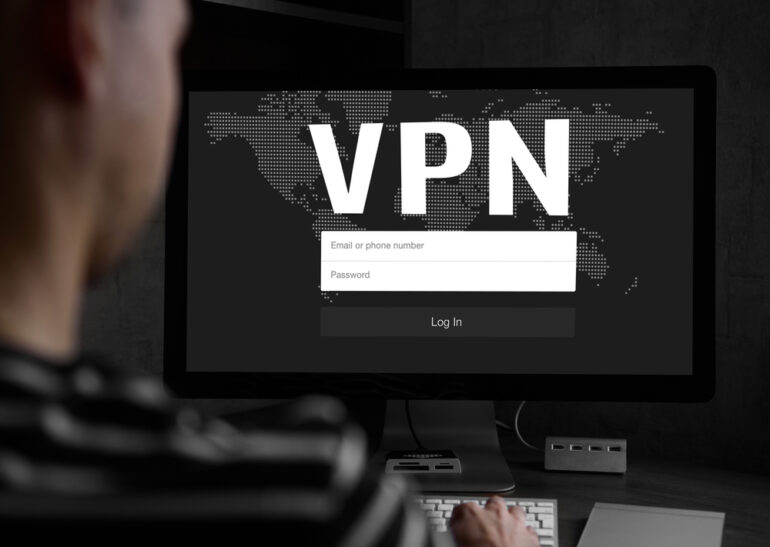VPNs are excellent security tools – they hide your IP address and protect your traffic from hackers. But are all VPNs good or is it dangerous to use some of them?
Well, it’s important to stick to secure trusted VPN services. That’s the only way to make sure your data is 100% safe. Unfortunately, just because a VPN says it secures your traffic doesn’t mean it actually does that. There are hundreds of VPNs on the market, after all, and it’s pretty much impossible for all of them to offer the same high-end security features.
In this article, we’ll show you how to spot a dangerous VPN – here’s the full list of red flags:
1. It Keeps Logs
A truly secure VPN doesn’t keep any logs. It doesn’t collect your IP address and doesn’t monitor your traffic (what files you download, what sites you visit, etc.). And that makes sense – you’re using a VPN to hide that information to begin with!
It’s not enough for a VPN’s marketing copy to say it doesn’t keep logs. You need to read the privacy policy and TOS page to make sure the VPN doesn’t log any personal data. Also, make sure the provider doesn’t share your data with third parties (like advertisers).
As a general rule of thumb, if you want to make sure you’re really using a secure no-logs VPN, pick a service that has successfully passed a no-logs security audit (like ExpressVPN and NordVPN).
Quick Note About Audited VPNs
An audited no-logs policy is great – you know you can trust it. But don’t believe any VPN that says their logging policy is audited! The audit’s results should be available online for you to read.
IPVanish, for example, shared data with US authorities in 2016. They did it for a good reason (to catch a child predator), but they still lied to their users – when they did that, they were claiming to be a no-logs VPN. In 2017, IPVanish was bought by a different company who performed a no-logs audit. But IPVanish hasn’t published the audit’s results yet – so your only option is to take their word for it (and they already lied to their users once).
2. It Only Uses PPTP
If the VPN only lets you use PPTP, run. It’s a very fast protocol (probably the fastest one out there), but it’s not safe to use at all. PPTP’s encryption is very weak – the NSA already cracked it!
Similarly, if you can only use L2TP/IPSec besides PPTP, pick a different VPN. While L2TP/IPSec hasn’t been officially compromised, many people are still wary of using it.
Here’s a list of good, secure protocols any trustworthy VPN should offer:
- OpenVPN (it’s open-source and very secure).
- WireGuard (it’s open-source, secure, and very fast).
- IKEV2/IPSec (secure, fast, and perfect for mobile devices because it resists network changes).
SoftEther is also a secure, fast, and open-source protocol, but most VPNs don’t have it inside their apps. To use it, you have to download and install the third-party SoftEther client.
3. It Leaks Your Data
A data leak is when a VPN omits certain parts of your traffic outside the VPN tunnel – like your IP address. That means other sites can still see your IP even though you’re using a VPN (which defeats the purpose of using a VPN in the first place).
VPNs can suffer data leaks because their servers are not properly configured. For example, a VPN might not be configured to support or block IPv6 traffic. In that case, it automatically leaks IPv6 IP addresses if the users don’t manually disable them on their end.
The best way to see if a VPN is leaking your data is to use ipleak.net. It will show if you your VPN is suffering IPv6, DNS, or WebRTC leaks. To use it, do this:
- Visit the online tool without being connected to the VPN.
- Take a screenshot of the results you get.
- Refresh the page after connecting to the VPN.
- Compare the results with your screenshot.
If you see your original IPv6, DNS, or WebRTC IP there, the VPN is leaking.
To avoid issues like this, you have to use a VPN with complete leak protection.
4. It Doesn’t Have a Kill Switch
A kill switch is a VPN feature that protects you against traffic leaks (when your VPN disconnects and your data is left exposed). Basically, the kill switch triggers when the VPN connection drops. When that happens, the kill switch stops all Internet traffic on your device. You can only connect to the web once the VPN connection has been re-established.
If a VPN is missing this feature, using it will be dangerous – you never know when your data might be accidentally exposed!
5. It’s Completely Free
Free VPNs just aren’t safe to use – especially the free ones you randomly come across on Google Play. Most of them log your data and sell it to advertisers (they have to make a living somehow). And other free VPNs expose you to ads and even malware!
As if that weren’t enough, free VPNs also offer a poor online experience. Most of them have very slow speeds (we usually experience an 80-90% slowdown with free VPNs on average). Expect HD videos to load slowly and large torrents to take a long time to finish downloading. Oh, and free VPNs also limit how much data you can use each month (they only let you use anywhere between 500 MB and 2 GB).
How Else Do You Spot Risky VPNs?
What other red flags do you watch out for? Please tell us about them in the comments below. And if you know any particular VPNs by name that aren’t safe to use, please mention them (and tell us why they’re dangerous).







